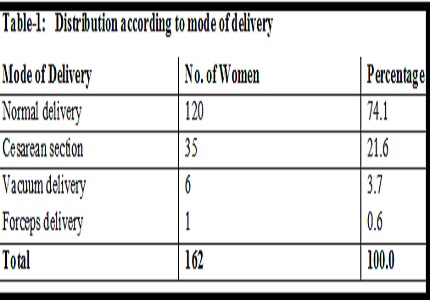Study of bacterial flora in perianal region and vagina and relation to neonatal outcome
Abstract
Objectives: Study of bacterial flora in perianal region and vagina and relation to neonatal outcome and sepsis.
Methodology: After taking detailed history, doing a general physical & obstetric examination and routine antenatal investigations, all the patients were subjected to special investigations.
Results: Out of 17 neonatal septic babies 4 babies mother have PROM with significant p value 0.03. 4 mothers have prolonged labor with significant p value 0.03. Out of 17 neonatal septic babies 5 mothers have H/O multiple P/V examination with significant p value 0.04.One patient had history of fever. 10 mothers had Preterm delivery which is statistically not significant p value 0.118. The data were analyzed using the Pearson’s chi square test, macnemar chi square test.
Conclusion: From the study it was concluded that there is a certain degree of correspondence between the vaginal and rectal micro flora. Microbial colonization of the maternal genital tract is a key factor in most cases of sepsis. Although prevalence study reports a predominance of Gram negative bacilli among female genital colonizers and Gram-negative sepsis among their infants.
Downloads
References
2. Bang AT, Bang RA, Baitule S, Deshmukh M, Reddy MH. Burden of morbidities and the unmet need for health care in rural neonates-a prospective observational study in Gadchiroli, India. Indian pediatrics. 2001 Sep 1;38(9):952-66. [PubMed]
3. Cutland CL, Madhi SA, Zell ER, Kuwanda L, Laque M, Groome M, Gorwitz R, Thigpen MC, Patel R, Velaphi SC, Adrian P. Chlorhexidine maternal-vaginal and neonate body wipes in sepsis and vertical transmission of pathogenic bacteria in South Africa: a randomised, controlled trial. The Lancet. 2009 Dec 11;374(9705):1909-16.
4. Antonio MA, Rabe LK, Hillier SL. Colonization of the rectum by Lactobacillus species and decreased risk of bacterial vaginosis. The Journal of infectious diseases. 2005 Aug 1;192(3):394-8. [PubMed]
5. Lamont RF, Sobel JD, Akins RA, Hassan SS, Chaiworapongsa T, Kusanovic JP, Romero R. The vaginal microbiome: new information about genital tract flora using molecular based techniques. BJOG: An International Journal of Obstetrics & Gynaecology. 2011 Apr 1;118(5):533-49.
6. Hansen SM, Uldbjerg N, Kilian M, Sørensen UB. Dynamics of Streptococcus agalactiae colonization in women during and after pregnancy and in their infants. Journal of clinical microbiology. 2004 Jan 1;42(1):83-9.
7.Stoll BJ, Schuchat A. Maternal carriage of group B streptococci in developing countries. The Pediatric infectious disease journal. 1998 Jun 1;17(6):499-503
8. Mändar R, Mikelsaar M. Transmission of mother’s microflora to the newborn at birth. Neonatology. 1996; 69(1):30-5.
9. Lamont RF, Taylor‐Robinson D, Newman M, Wigglesworth J, Elder MG. Spontaneous early preterm labour associated with abnormal genital bacterial colonization. BJOG: An International Journal of Obstetrics & Gynaecology. 1986 Aug 1;93(8):804-10.
10. Tamelienė R, Barčaitė E, Stonienė D, Buinauskienė J, Markūnienė E, Kudrevičienė A, Vitkauskienė A, Jomantienė D, Nadišauskienė RJ. Escherichia coli colonization in neonates: prevalence, perinatal transmission, antimicrobial susceptibility, and risk factors. Medicina. 2012;48(2):71-6.

Copyright (c) 2017 Author (s). Published by Siddharth Health Research and Social Welfare Society

This work is licensed under a Creative Commons Attribution 4.0 International License.


 OAI - Open Archives Initiative
OAI - Open Archives Initiative



















 Therapoid
Therapoid

